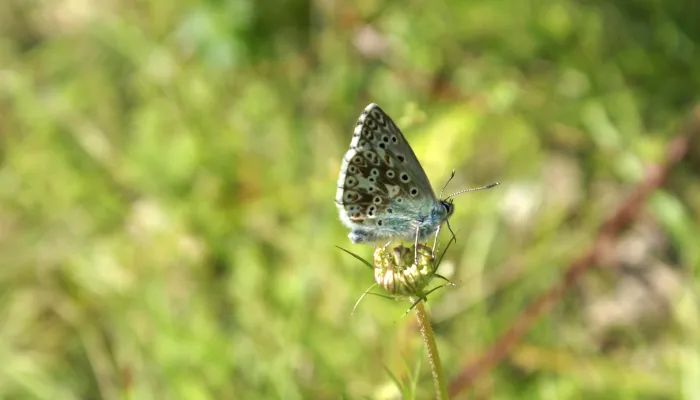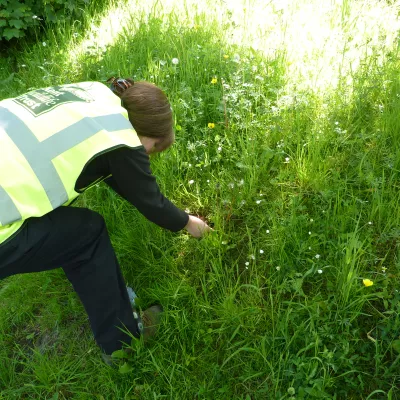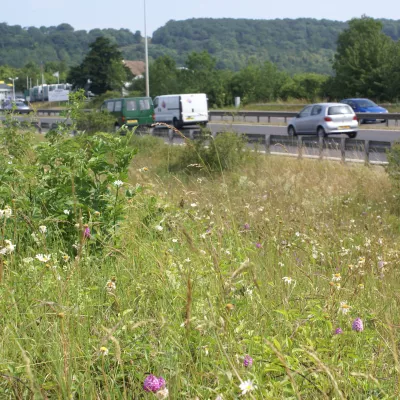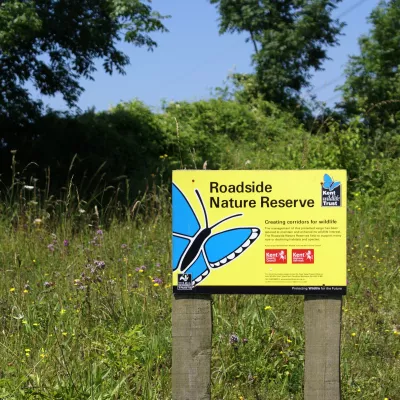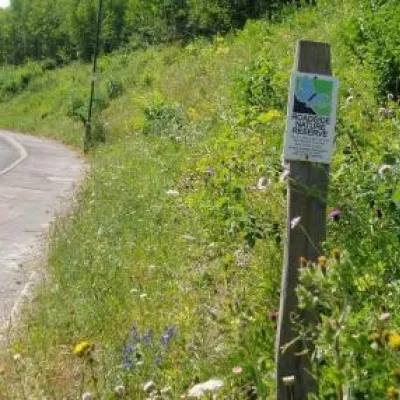The Roadside Nature Reserves project was created in order to conserve particular species and habitats present on road verges, but also to create wildlife corridors and stepping stones to link up good quality habitats. The landscape in Kent, and much of the rest of the UK, has become increasingly fragmented, especially in the last 50 years or so. As populations become isolated their chances of survival become far less likely, these verge wildlife corridors are great for connecting up these populations and helping to create a living landscape in which wildlife can move through. The Roadside Nature Reserves are very important in conserving species and habitats that provide important forage and refuge for insects, as well as other important wildlife.
As we are working in a partnership with Kent County Council highway services, the Roadside Nature Rerserves are only cut annually by contractors in October which allows flowers to survive the whole summer and set seed in autumn. The rest of the Roadside Nature Reserves are either managed with a team of practical volunteers or grazed. We are lucky enough to have a great bunch of volunteers who work on the priority sites that are safe enough to do so.
The management of these grassland Roadside Nature Reserves in particular have created fantastic places for wildlife to thrive, selective scrub clearance stops wildflowers being shaded out but provides shelter for reptiles and other wildlife. Cutting and raking verges with volunteers has encouraged the growth and diversity of wildflowers which are great for pollinators and other insects, it’s also encouraged the spread of caterpillar food plants such as Horseshoe vetch for the Adonis Blue.
Bethany Pateman, our Roadside Nature Reserves Officer, has been working on this project for nearly two years. It’s been very rewarding to see the results of the practical winter work in the huge diversity and abundance of wildlife you can find on these verges in the summer. It’s also fantastic to see that public perception on wilder looking verges is starting to change and a lot more communities are interested in getting involved in making their verges more wildlife-friendly.
Key achievements
- The Roadside Nature Reserves have a combined length of 8.5km with approximately 48 hectares in combined area, the majority of Roadside Nature Reserve sites are chalk grassland but other habitats include ancient woodland, acid and neutral grassland.
- 75 volunteers in total; around 18 practical task volunteers and the rest are volunteer wardens who keep an eye on their Roadside Nature Reserve, litter pick and some do survey work too.
- There was an incredible record number of 30 butterfly species recorded on a chalk grassland Roadside Nature Reserve near Dover lin 2019, this is up from 27 species when the butterfly transect was set up in 2015.
- Good management on two separate Roadside Nature Reserves has encouraged the first recordings of the Small Blue butterfly last year.
I started volunteering for Kent Wildlife Trust in 2003. Being a keen birdwatcher, and having spare time, I wanted to “give something back”. I joined the Roadside Nature Reserves project as a volunteer warden, was assigned a verge and given a long list of plants to look for, most of which I had never heard. I also joined the maintenance team, working on verges around Kent one day a week.Dave Watson, Roadside Nature Reserves volunteer
Sixteen years later, I’ve learnt a huge amount about grassland management, plants, insects, mammals and reptiles and much more. I’ve enjoyed working with a great team of people and it’s kept me pretty fit too.

